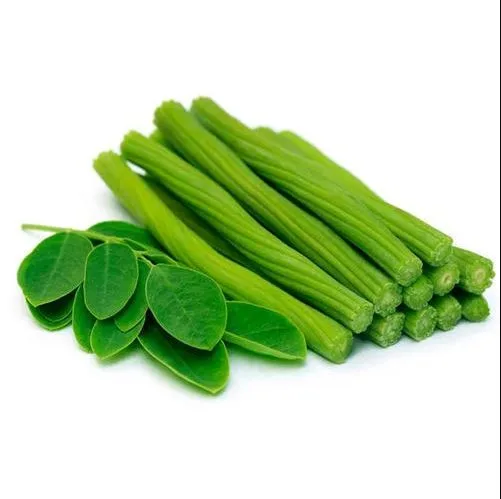
Moringa leaves, often referred to as the “miracle leaves,” are a powerhouse of nutrients that can enhance your overall health and wellness. Whether you are looking to boost immunity, improve digestion, or increase energy levels, adding fresh moringa leaves to your diet can make a world of difference. In this article, we’ll explore how to eat fresh moringa leaves, how much you can safely consume in a day, and the potential side effects you should be aware of.
Why Should You Eat Fresh Moringa Leaves?
Moringa oleifera, commonly known as the drumstick tree, is renowned for its nutrient-dense leaves. These vibrant green leaves are rich in vitamins A, C, and E, iron, calcium, potassium, and essential amino acids. Here’s why you should eat fresh moringa leaves:
- Nutrient-Rich: Fresh moringa leaves are packed with essential nutrients that your body needs for optimal functioning.
- Rich in Antioxidants: They contain powerful antioxidants, such as quercetin and chlorogenic acid, which protect against oxidative stress.
- Boosts Immunity: High levels of vitamin C in moringa leaves can enhance your immune system.
- Improves Digestion: The fiber content in moringa supports digestive health.
- Helps Manage Blood Sugar Levels: Studies suggest that moringa leaves can help regulate blood sugar levels, making them beneficial for people with diabetes.
How to Eat Fresh Moringa Leaves
There are numerous ways to incorporate fresh moringa leaves into your diet. Here are some delicious and practical methods:
1. Raw in Salads
Fresh moringa leaves can be eaten raw by adding them to salads. Wash the leaves thoroughly, then mix them with other greens, cucumbers, tomatoes, and a light vinaigrette for a nutritious salad.
2. Smoothies and Juices
Blend a handful of fresh moringa leaves with fruits like bananas, mangoes, or pineapples to create a refreshing smoothie. You can also juice them with ingredients like cucumber, celery, and lemon.
3. Moringa Tea
Steep fresh moringa leaves in hot water for 5-7 minutes to make moringa tea. Add honey or lemon for extra flavor.
4. Cooked in Soups and Curries
Cook fresh moringa leaves with lentils, vegetables, or coconut milk to create flavorful soups and curries. Cooking them slightly enhances their taste and makes them easier to digest.
5. Toppings for Dishes
Use fresh moringa leaves as a topping for pizza, pasta, or stir-fries to add a burst of nutrition to your meals.
How Much Fresh Moringa Leaves Can You Eat in a Day?
While fresh moringa leaves are incredibly beneficial, moderation is key. The recommended daily intake depends on your health condition and dietary needs.
- General Recommendation: Consuming 50-100 grams (approximately 1-2 cups) of fresh moringa leaves per day is considered safe and beneficial for most individuals.
- For Beginners: If you’re new to eating moringa leaves, start with a small amount, such as 20-30 grams, and gradually increase the quantity to allow your body to adapt.
- For Therapeutic Use: Consult a healthcare professional to determine the right dosage if you plan to use moringa leaves for specific health conditions.
Potential Side Effects of Eating Fresh Moringa Leaves
Although moringa leaves are safe for most people, it’s important to be aware of potential side effects:
- Digestive Issues: Overconsumption may lead to mild digestive issues such as bloating, diarrhea, or stomach cramps.
- Allergic Reactions: Some individuals may be allergic to moringa leaves. If you experience itching, swelling, or difficulty breathing, discontinue use and consult a doctor.
- Pregnancy Concerns: Pregnant women should avoid excessive intake of moringa leaves, as they may stimulate uterine contractions. Consult a healthcare provider before including them in your diet.
- Interactions with Medications: Moringa leaves may interact with certain medications, especially those for diabetes and high blood pressure. Speak to your doctor if you are on prescription drugs.
The Best Time to
The best time to eat fresh moringa leaves is during the morning, as their nutrient content can provide a natural energy boost to start your day. Consuming them with breakfast or as part of a morning smoothie can maximize their benefits.
Tips for Storing Fresh Moringa Leaves
To retain their freshness and nutritional value, follow these tips:
- Refrigerate: Wrap the leaves in a damp paper towel and store them in an airtight container in the refrigerator. They can last for up to a week.
- Freeze: If you have excess moringa leaves, blanch them and store them in the freezer for long-term use.
Why Choose Fresh Moringa Leaves Over Supplements?
While moringa leaf powder and supplements are widely available, eating fresh moringa leaves offers several advantages:
- Higher Nutritional Value: Fresh leaves retain more nutrients compared to processed powders.
- Better Flavor and Texture: Fresh leaves have a pleasant taste and texture that can enhance your meals.
- No Additives or Preservatives: Fresh moringa leaves are free from additives, making them a healthier choice.
Final Thoughts on Eating Fresh Moringa Leaves
Incorporating fresh moringa leaves into your diet is an excellent way to improve your health naturally. From boosting immunity to supporting digestion, these miracle leaves are a gift from nature that should not be overlooked. Remember to eat fresh moringa leaves in moderation, and consult your doctor if you have any specific health concerns.
Make moringa leaves a staple in your kitchen, and experience the incredible benefits of this superfood. Start your journey today and unlock the secret to a healthier, happier life!
